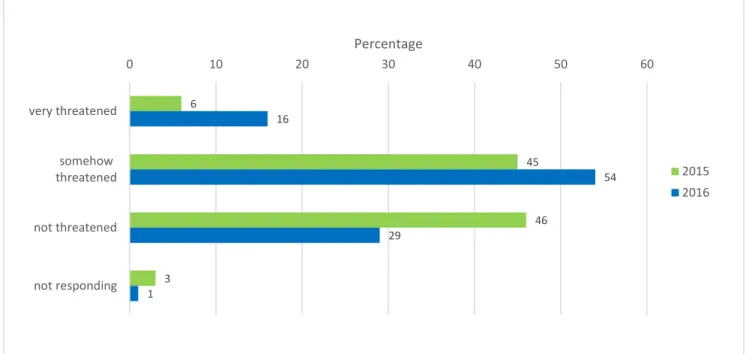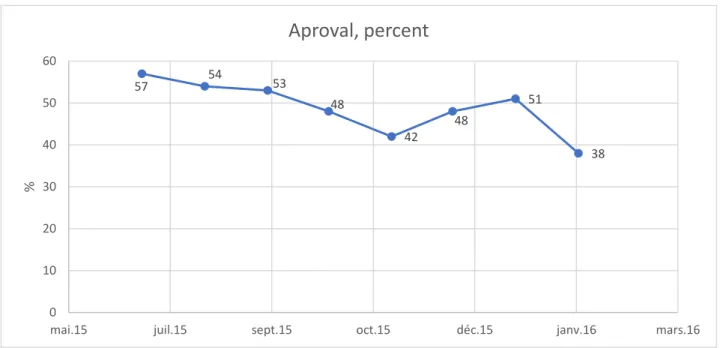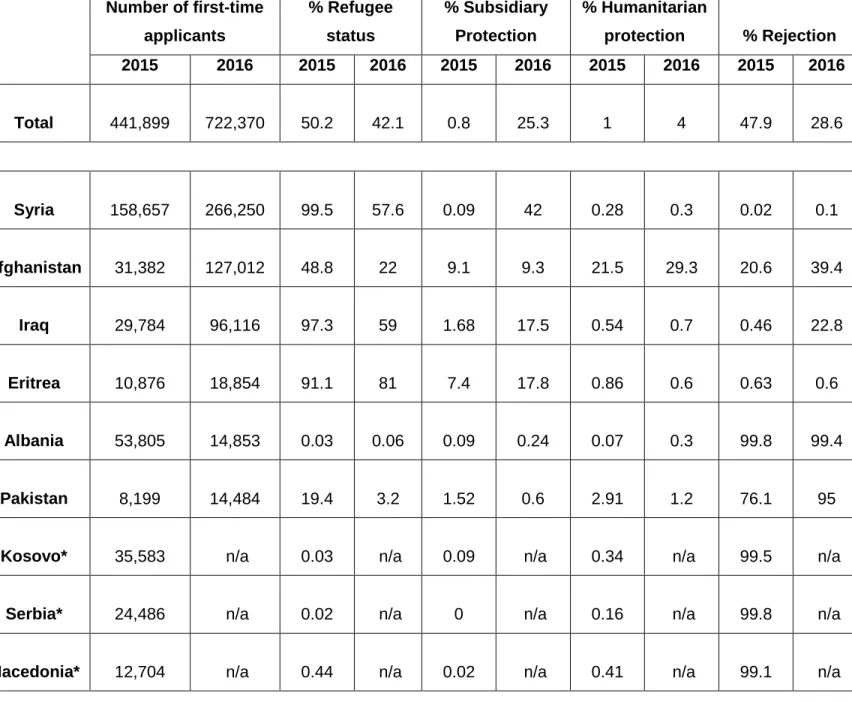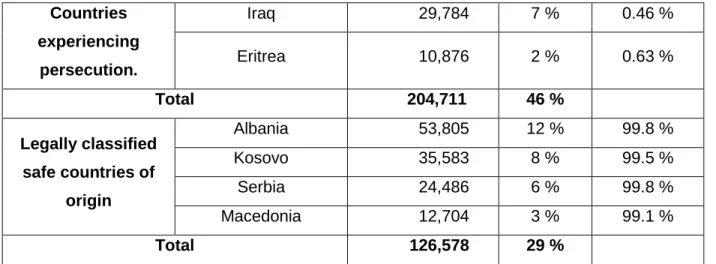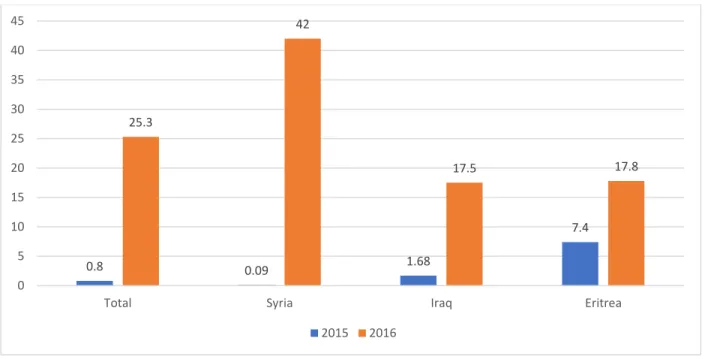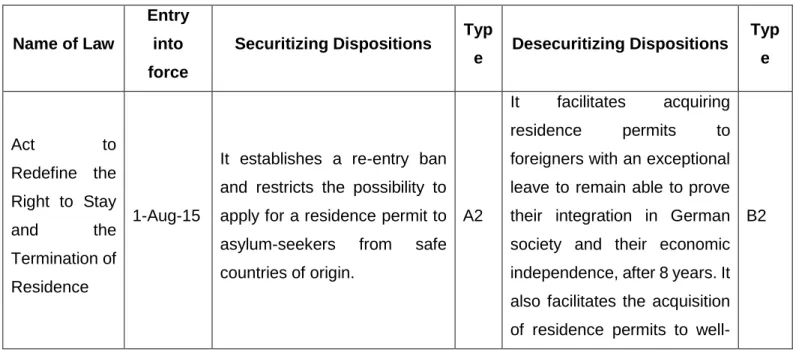The study reveals the role that security played in the discursive construction of the crisis in Germany and how it influenced the legal and political frameworks governing refugee flows. The study goes beyond the linguistic construction of the refugee crisis by engaging in an analysis of the socio-historical context in which the political debate on the institution of asylum in Germany was framed in order to understand the influence of internal and external factors on political and security outcomes.
INTRODUCTION
The second section includes the analysis of the Federal Chancellor's decurtifying discourse on the refugee crisis and the resulting policies adopted by the federal government during 2015-2016. The fourth part includes the analysis of the reaction of public opinion to the refugee crisis.
THEORETICAL FRAMEWORK
Literature review
- Migration studies
- Securitization Theory
- Limitations of the literature
- Improvements in Securitization Theory
Fourth, there are problems in considering identity as the reference object of the migration securitization. The theory of societal security has received criticism for its use of identity as an object of reference.
Methodology
- Theory
- Research Design
- Method
Of the 349 press releases, 34 were used in the analysis because of their direct relation to the refugee crisis.3. The humanitarian framework of desecuritization corresponds to the reconstruction of the security subject as a referent object according to humanitarian imperatives.

THE DISCOURSE AND POLICIES OF THE FEDERAL CHANCELLOR
General patterns of the discourse construction
- Inconsistency in the discourse
- The link between the national and the EU level
In fact, her most common discursive construction of the refugee crisis presented a dyad of genuine/illegitimate refugees simultaneously seeking asylum in the EU. But given the magnitude of the refugee problem, we must also make it clear that anyone who comes to us for economic reasons alone will have to return to their homeland. First, at EU level, the Chancellor sees the refugee crisis as a threat to the EU's cohesion and to the continuity of the European integration project, as it occurred at a time when the EU was politically weakened by the effects of the 2010 sovereign debt and euro crises.
On the contrary, at the national level, Merkel saw a favorable economic, fiscal and social environment for the adoption of an exemplary measure, temporarily suspending the application of the Dublin Regulation and keeping Germany's borders open for asylum-seeker flows.
The construction of Germany’s collective identity
In light of the CDU's anniversary celebrations, I spoke about Germany as a country of immigration. This point is important given that Merkel framed the open borders refugee policy as aiming to provide protection mainly to Syrian refugees, who are reported by the media and the AfD to be predominantly Muslim and consequently a source of ontological and in relation to the Islamist terrorist attacks taking place in Europe also a physical threat to German society. In this context, the chancellor tried to prevent the securitization of the Muslim refugee by arguing that Islam was part of Germany's collective identity.
Due to the terrorist attacks, the Chancellor constructed Islam in binary terms (religion/political ideology) and promoted the integration of Muslims into German society depending on their actions: “Muslims are guaranteed the right to freedom of religion, but also the duty to The legal framework of Germany.” (Die Bundeskanzlerin 2015f) As in the case of the dyadic construction of the refugee as real and illegitimate, these figurations of Islam are problematic because they cast doubt on the true nature and intentions of the Muslim and the refugee.
The use of security frames to construct the refugee crisis
- First moment: January-September 2015
- Second moment: September 2015- December 2016
This change in the social context and in the perception of the security nature of the refugee crisis affected popular support for the government and provoked a growing opposition to the open-door policy. Die Bundeskanzlerin 2015d) The reasons Merkel gives for this selective construction of the refugee are different. Consequently, the tone of the discourse becomes harsher and the proposed policies to respond to the refugee crisis more restrictive.
To de-securitize the refugee's religious identity marker, the Chancellor used her traditional humanitarian de-securitization framework.
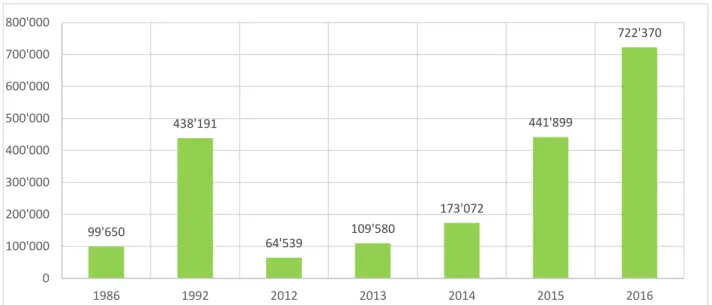
The process of securitization in the Chancellor’s discourse
- Securitizing moves in Merkel’s discourse
- Changes in the federal legal framework regulating asylum
24/04/2015 At EU level, in the aftermath of the humanitarian crisis in the Mediterranean. In practice, this measure means that the EU borders are closed to asylum seekers because they can no longer apply in the EU, but only in Turkey. As such, the refugee as a security object is being replaced by the causes of the humanitarian crisis at the EU borders.
The legal instruments analyzed coincide to some extent with, and at the same time contradict, the Federal Chancellor's discursive construction of the refugee crisis.

Conclusions
On the contrary, despite the adoption and defense of open-door policies, a process of securitization of the refugee crisis is observed in the federal government's actions whereby the refugee, both in its deserving and non-deserving figurative subcategories, is symbolically attributed to the state of security risk. On the contrary, most of the measures in themselves, without the linguistic and socio-historical context, appear to be only administrative adjustments, banal and harmless. Nevertheless, their practical purpose is to limit rights for asylum seekers, reduce the number of asylum seekers and limit the responsibilities of the German state in providing international protection, as part of a political decision arising from a reading of certain figurative subcategories of refugees as a threat to.
At the same time, this symbolic construction of security, which generalized the risky and hostile nature of the refugee, jeopardized Merkel's desecuritizing strategy of transforming the relationship between German society and the refugee-Other and therefore prevented a successful rearticulation of social identities that could have ended in a disarticulation of security practices in connection with asylum in Germany.
THE CONSTRUCTION OF TEXT ON THE REFUGEE CRISIS BY THE AFD
Securitization frames
- Ontological security frames
- Physical security frames
In the AfD's discourse, the use of binaries is more limited than in the case of Chancellor Merkel, who shows a clear negative perception of the refugee. First, it presents the government as "fraudulent" and "ruling against" the interests of the German people. In response, AfD politicians called for policy measures that involved rejecting the refugee.
The construction of the refugee as a sex offender did not begin with the Cologne incidents.

Conclusion
Finally, we must realize that this horrible act is also the result of the loss of control at the German borders. At the same time, a process of securitization is articulated in order to construct the Muslim immigrant/refugee as an uncivilized enemy of the German state and German society, thus triggering a socio-psychological process of abjection. This framework of securitization of the refugee, based on his construction of an existential threat to national and internal security, provides the conditions of possibility for an extreme form of difference.
The result is the rejection of the refugee-Other, a political dehumanization of the refugee in which his hostile nature overshadows the causes of his forced displacement as well as the humanitarian crisis he endures at EU borders.
THE ROLE OF THE GERMAN MEDIA IN THE (DE)SECURITIZATION OF THE REFUGEE
The text construction in Der Taggespiegel
- Non-securitizing period: January-September 2015
- Securitizing period: October 2015-July 2016
- Desecuritizing period: July-December 2016
The change in Der Taggespiegel's position on the refugee crisis corresponds to the increase in anxiety that arose in German society at this time. To this humanitarian construction of the crisis, Der Taggespiegel added a representation of German society as open, solidary and responsible. In this way, the refugee is increasingly portrayed through the binary of authentic/illegitimate, indicating a growing distrust of the government's ability or will to enforce asylum procedures.
The huge losses of the CDU and the high result of the AfD are in any case attributed to the Chancellor's refugee policy.
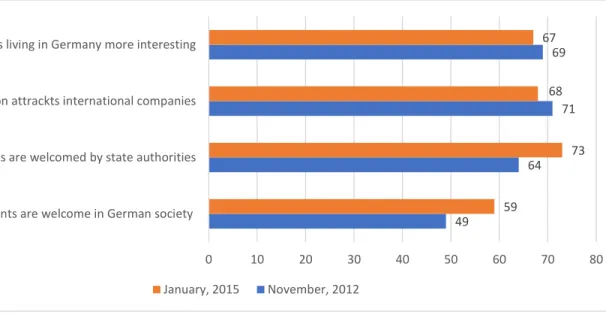
The text construction in Die Welt
- Ontological insecurity frames
- Physical security frames
It is interesting that the refugee's religious and ethnic markers are not emphasized as a physical threat in his performance. The construction of the refugee crisis as a threat to the collective sense of being can be observed in two different expressions since September 2015. Nevertheless, Seehofer's objections are important for the structure of the [Christian Democratic] Union and the well-being of the entire political landscape.
In the case of the construction of the refugee and the government policy in physical security terms, two important trends were observed.
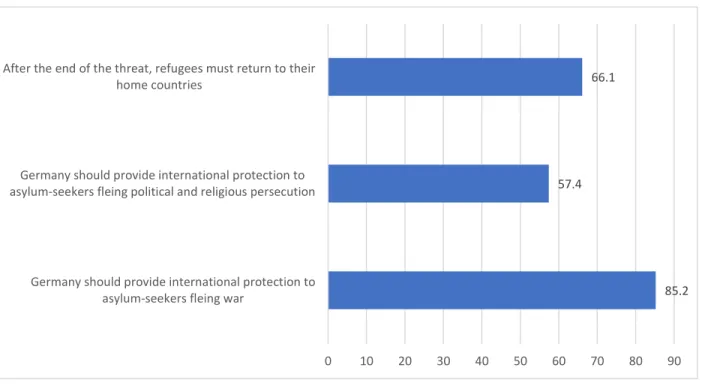
Conclusion
On the other hand, Der Taggespiegel and Die Welt also functioned as audiences in the political debate on the crisis in Germany by challenging and supporting the government's discourse and policies regarding the refugee crisis. Both newspapers actively participated in the intersubjective processes of construction of meaning around the refugee crisis as well as in its political response, which reflects the different general states of mind of German society in their historical development. The growing concern noted in the articles is related to the first turn in government policy, in which it adopts the first set of restrictive measures and begins to push for an EU solution to limit refugee flows.
A third example can be found in the reversal of public opinion after the Cologne incident and the rise of Islamist terrorist attacks in Europe in 2016, linked to the increase in the securitization of newspapers linking the refugee crisis to a sense of physical insecurity.
CONCLUSIONS
The dominant discourses during the refugee crisis and the policy responses
The analysis shows that during the refugee crisis there were three moments according to the dominant security discourse. The dominant discourse of security, as found in the AfD, in the press and in polls, portrayed the refugee crisis and the refugee itself as a source of ontological insecurity. In this context, the refugee was perceived as a threat to Germany's economy, fiscal sustainability, employment and housing opportunities, as well as to the welfare system (economic security framework).
This volatility in Chancellor Merkel's discourse increased the contradiction between the linguistic representation of and the forms of governmentality applied to the refugee.
Theoretical implications
- The scope of desecuritization in the German case
- The role of power in securitization
- The role of societal security
- On the nature of securitization as a social mechanism
The analysis of the securitization of asylum policy in Germany does not fully support this conceptualization. The secretive and apolitical expansion of the security field, theorized by the Paris School, thus has no basis. In that sense, the nature of the security measures supports Huysmans' description of security actions: they are small security nothing.
Those studies focus on the discursive construction of the refugee and the adoption of some measures, such as the open border refugee policy.
BIBLIOGRAPHY
Secondary sources
Behnke, "No way out: Desecuritization, emancipation and the eternal return of the political — a reply to Aradau", Journal of International Relations and Development. Skleparis, "Securitization of migration and the far right: the case of Greek security personnel", International Migration. Malik, "Integration of Muslim Migrants and the Politics of Dialogue: The Case of Modern Germany", Journal of Muslim Minority Affairs.
Mitzen, "Ontological Security in World Politics: State Identity and the Security Dilemma", European Journal of international relations.
Primary sources
Die Bundeskanzlerin, Pressekonferenz von Bundeskanzlerin Merkel zum Treffen der EU-Staats- und Regierungschefs mit der Türkei und anschließender außerordentlicher Sitzung der Mitglieder des Europäischen Rates, Pressemitteilung, 8. März 2016c. Die Kanzlerin, Rede von Kanzlerin Merkel auf der Internationalen Parlamentarischen Konferenz zur Religionsfreiheit am Mittwoch, 14. Gauland, Gauland: Der Neun-Punkte-Plan der Kanzlerin ist nur ein Beweis ihrer Unnachgiebigkeit, Pressemitteilung, 29. Juli 2016b.
Gauland, Gauland: Es gilt, gelassen und vor allem vernünftig auf den Terroranschlag in Berlin zu reagieren, Pressemitteilung, Dezember 2016c.
